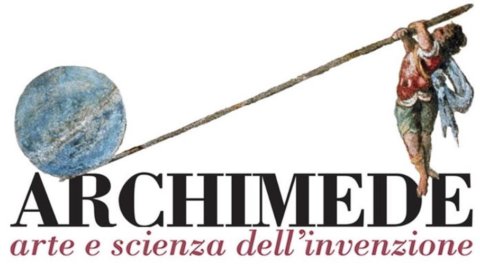An exhibition open to Capitoline Museums, until 12 January 2014 will reveal, in the exhibition "Archimedes. Art and science of invention”, the many aspects of the brilliant Syracusan scientist illustrating the extraordinary contribution that his investigations and inventions have given to the knowledge of the ancient world and of the centuries to come.
The historiographical tradition attributes to Archimedes the invention of the machines that delayed the fall of Syracuse besieged by the Romans and of devices such as the water clock, the mechanical planetarium, the hydraulic screw. The exhibition is conceived by the Museo Galileo Istituto e Museo di Storia della Scienza in Florence, with the collaboration of the Max-Planck-Institut für Wissenschaftsgeschichte of Berlin and with the contribution of the Regional Department of Cultural Heritage and Sicilian Identity and the Superintendence Special for the Archaeological Heritage of Naples and Pompeii. The exhibition is divided into two main strands: the first makes us understand the extent of the contribution that Archimedes gave to the growth of science in the Hellenistic age.
Here, visitors will be able - through the philological re-proposition of the machines that tradition attributes to Archimedes - to admire working models of gadgets and devices, multimedia applications and 3D films that visualize their functioning, allowing almost a real journey through time and space. The treatises of Archimedes are instead the heart of the second strand of the exhibition.
these manuscript codes – acquired through very high quality reproductions – contain the works of the Syracusan scientist and will tell the most significant aspects of Archimedes' fortune and his myth up to the rediscovery of his texts by the fifteenth century humanists and the advantageous use they made of them protagonists of the Scientific Revolution. A fascinating itinerary, enriched by a selection of archaeological finds, which will help to understand the environment in which Archimedes lived and worked and which will accompany the visitor through eight sections:
• SIRACUSA, the city of Archimedes, tells, through original finds, reconstructions, working models and multimedia applications, the splendor of Syracuse in the III century BC
• Syracuse and the Mediterranean. The two main Mediterranean centers for the development of scientific and technical knowledge described by archaeological finds and multimedia devices.
• Archimedes and Rome. Epochal moment for the ancient world the killing of Archimedes by the Romans during the siege of Syracuse. The conditions for the birth of a real myth linked to the life and works of Archimedes were created in Rome. • Archimedes and Islam. Islamic civilization – which credits him with the conception of extraordinarily effective devices – studies and comments on some of Archimedes' works.
• Archimedes and Islam. Islamic civilization – which credits him with the conception of extraordinarily effective devices – studies and comments on some of Archimedes' works.
• The rediscovery of Archimedes in the West. Artists, scholars and princes vie for possession of the Syracusan's works, the object of research by collectors, marking a turning point for the resumption of investigations into mathematics and geometry.
• Leonardo and Archimedes. The artists' interest in Archimedes is also proved by a codex with the treatises of Archimedes with annotations by Piero della Francesca. • Galileo and Archimedes. Archimedes' work constitutes a constant point of reference for Galileo who, during his scientific career, will consider the Syracusan an example to imitate.
• Archimedean geometry. This section celebrates Archimedes' ingenious geometric and mechanical intuitions. Also on display are numerous original finds from the "Paolo Orsi" Regional Archaeological Museum in Syracuse which will illustrate life in Syracuse in the XNUMXrd century BC And again, statues, paintings, mosaics, drawings and original scientific instruments mainly from the Capitoline Museums, the Archaeological Museum of Naples, the Antiquarium of Pompeii and the state museums of Berlin.
To enrich the itinerary, a gallery of images of inventions and objects entitled to Archimedes: lamps, bathyscaphes, trains, submarines and even a crater with his name.
The exhibition offers a rich program of events, conferences and educational workshops. In fact, along the entire route and in particular in the last section of the exhibition, experimental stations, models and exhibits are presented which will actively involve visitors of all ages, to make the Archimedean principles understandable, furthermore through the laboratories it will be possible to experiment with some of the most significant Archimedean experiences and to carry out calculation operations according to the knowledge of the ancients. A catalog in Italian and English, with rich illustrations and contributions from leading Italian and international specialists in the sector, will accompany the exhibition.
In June, free educational workshops I play with art for children aged 6 to 12 thanks to Roma Capitale and Il Gioco del Lotto for knowing how people counted in antiquity. Inventor, astronomer, mathematician, machine expert. A timeless genius, that of Archimedes, who has collected and collects around him interest, amazement and much emulation.
The exhibition is promoted by Roma Capitale, the Department of Cultural Policies and the Historic Center, the Capitoline Superintendence, the Galileo Museum and Zètema Progetto Cultura.





